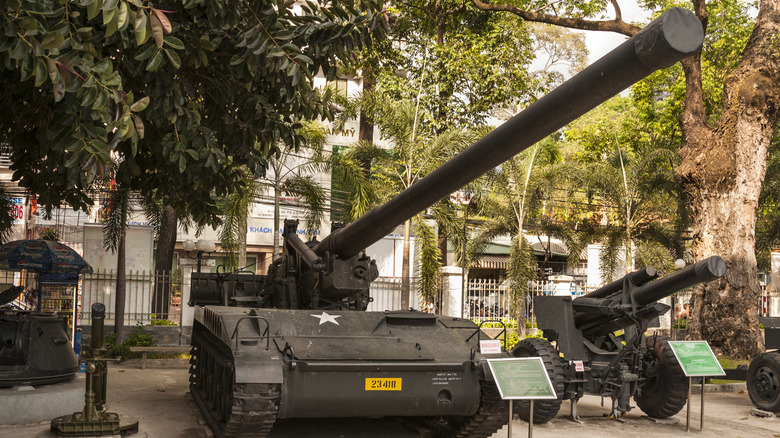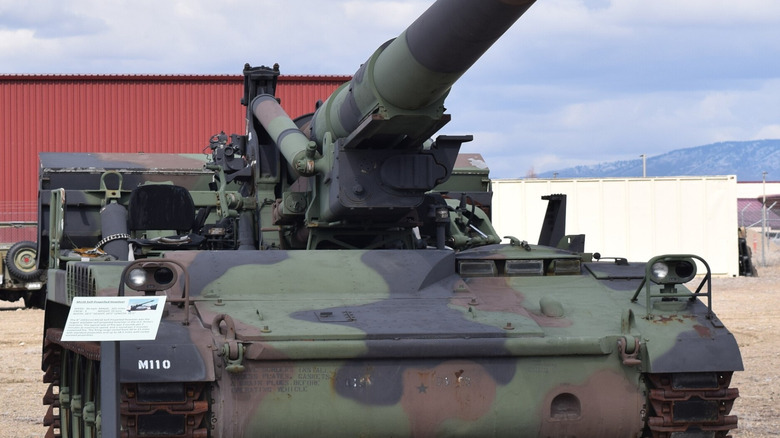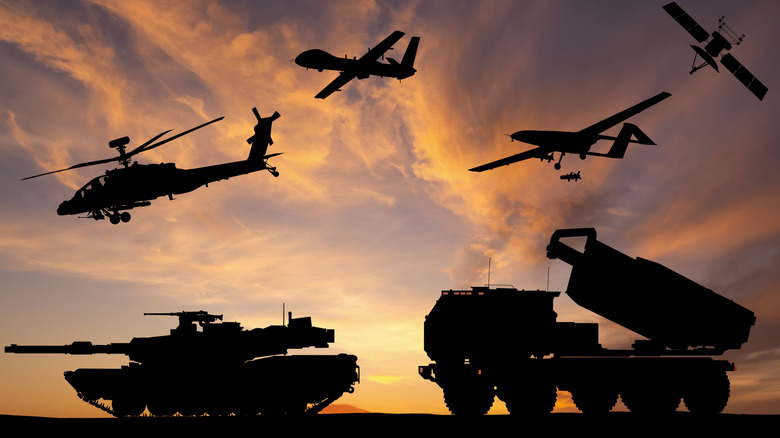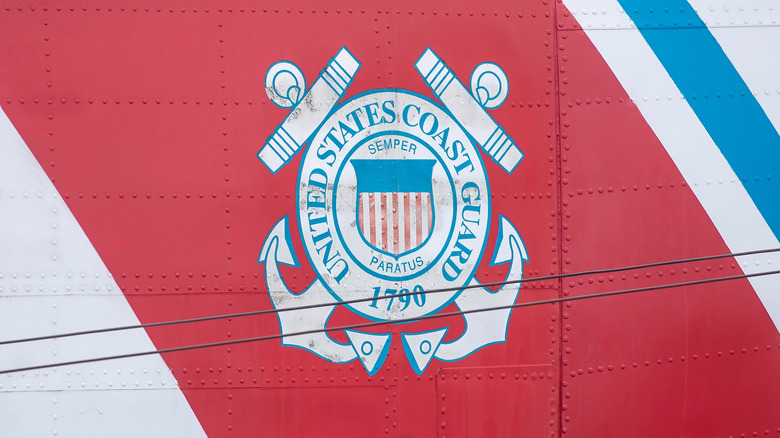What Does SPG Stand For In The Military? Here's Every Meaning Behind The Acronym
Things can become quite complicated when the same acronym is used in different areas for very different things. You probably know the CIA as the Central Intelligence Agency, for instance, but in the food preparation world, it's more commonly used to refer to the Culinary Institute of America. The distinction is simple: one of these two CIAs describes itself as "the Nation's first line of defense," boasting that it can "accomplish what others cannot accomplish and go where others cannot go," and you can probably guess which one. (via cia.gov)
Acronyms can be tricky, then, and to confuse matters further, sometimes the very same body uses the same one for multiple things. In the military, an SPG is a self-propelled gun in some contexts, while referring to Strategic Planning Guidance in others. The former, of course, is an armament and one that may feature prominently in the strategies and overall direction provided and outlined by the latter. A self-propelled gun, easily mistaken for or confused with a tank, is a distinct type of weapon, and the commonalities and vital differentiation between the two mean that it's important to know not only what the acronyms stand for but what these concepts really mean.
Both domestically and internationally, SPG is an important acronym for military and law enforcement, and the meaning becomes even more interesting when you consider the different types of self-propelled guns that have been developed.
Self-propelled gun
Shells are among the most fearsome weapons ever devised. During World War II, these formidable weapons were capable of tremendous destruction: Shells as large as 127 lbs could be propelled almost 14 miles by the M1A1, a howitzer quite rightly known by the nickname Long Tom. A primary issue with these weapons, however, was not only locating and tracking targets at the time but also getting them to viable positions to be used.
One way of overcoming the issues of towing such guns is, of course, equipping them to move and be repositioned by themselves. Self-propelled guns as a concept have existed for a long time, and as R. M. Ogorkiewicz writes in "The Evolution Of Self-Propelled Guns," they "were offered as a solution" to "the problem of the mobility of heavy weapons" (via Taylor & Francis Online).
The self-propelled howitzer, meanwhile, such as Ukraine's 2S22 Bohdana, can be defined as a slightly different beast. Howitzers, technically, are a different type of ordinance than a conventional gun, typically used to fire at a higher trajectory. As such, they are sometimes referred to as SPA, or self-propelled artillery. The principle is the same, however: These are powerful weapons that often run on tracks, making them more capable of getting around under their own steam and, in doing so, ensuring that they are less vulnerable to opposing fire and don't require the same type of complicated, coordinated efforts to position and reposition.
Self-propelled guns have existed for a very long time, with one of the first examples being the Gun Carrier Mark 1 (pictured here), a British World War I workhorse that could be equipped with guns or used to carry up to around 10 tons worth of shells where they were needed.
Different types of self-propelled guns
The SPG has come a long way since the introduction of the Gun Carrier Mark 1, as nations around the world have sought to upgrade their arsenals. As Jason Belgrave of The Australian Armour & Artillery Museum put it, "In the late fifties, the Americans wanted to upgrade a lot of their equipment, especially after Korea, that was also dating back to World War II." This led to the M110, a self-propelled howitzer that entered U.S. service in 1963. It fired monstrous 203mm shells, which were delivered mainly by "M548, that track load carrier, which carries the extra ammunition for this vehicle," per Belgrave. (via YouTube)
Those sizable shells, with the weapon being a howitzer, were typically fired at an angle up to 65 degrees, though there's some versatility: "It's not a direct-fire weapon as such, but this gun can be used if required in a direct-fire role," Belgrave went on. It's the biggest weapon of its kind in the U.S. back catalog. (via YouTube)
The U.S. military currently wields the M1064A3 self-propelled mortar, which is specialized for firing at higher angles. The primary advantage of doing so is that the user can bypass defenses that could otherwise foil a direct shot. At the same time, not requiring a direct line of sight means that the user is better able to attack from cover. Though they have heightened maneuverability from being self-propelled, they are also limited defensively. In a rather unfortunate way, too: According to ESD, "Both current US mortar carriers require the mortar hatch to remain open while firing, placing the crew at greater risk from counterfire."
Strategic Planning Guidance and Stockpile Planning Guidance
Of course, one critical aspect of a successful military is the assets those forces have available to them. As has been proven countless times over the history of armed conflict, however, there's much more to the equation than that. Success relies not only on numbers and strength but on how these limited resources — and they're finite even in the most deep-pocketed and well-supplied forces — are deployed. Many brilliant generals have stormed to impressive victories against numerically superior opposition by utilizing terrain and other force multipliers. Ultimately, a factor just as important as what you have is how you use it. For this, more broadly, an eye for strategy is needed, and its strategic planning guidance that provides the broader strokes to use to formulate such a strategy.
Within the Department of Defense, reports DAU, "Strategic Guidance is the common thread that integrates and synchronizes the activities of the Joint Staff, combatant commands, Services, and combat support agencies." Here, then, is how the various needs of the different branches of the military, and beyond, are managed and how they all coordinate their efforts in order to achieve them.
A similar concept is that of Stockpile Planning Guidance. This is the concept of managing and determining how stockpiles of supplies should be arranged and used. For instance, as the NATO Logistics Handbook explains, "Maritime Stockpile Planning Guidance determines the ammunition requirements for NATO maritime forces at TOA," as determined by computer models and kept track of via a carefully managed database of information.
Other uses of the acronym
Elsewhere in the United States, SPG has yet another alternate meaning. In the Coast Guard, the letter S typically stands for Specialist when abbreviating different roles. SPF is the abbreviation for Specialist (firefighter), SPO means Specialist (Inspector of Naval Material), and SPG is the abbreviated form of Specialist (gunnery).
Internationally, the acronym has a range of other interesting meanings, too. In India, the SPG is the Special Protection Group, which was created to provide security for the current and past Prime Ministers of the country and their immediate families. Its members, according to the Director's Message, "uphold the integrity of the nation and the spirit behind SPG motto 'Shauryam Samarpanam Surakshanam' (i.e. bravery, devotion and protection)."
In the U.K., a different SPG is employed: supplementary planning guidance, which Leeds City Council describes as " provid[ing] advice on policies in the Local Plan." It's a similar notion to strategic planning guidance in that it serves to provide more general policy direction and management but without the military focus. The island nation also fielded the Special Patrol Group, a branch of the Metropolitan Police formed in 1965. Today, it's known as the Territorial Support Group. Australia's State Protection Group is another instance. In this context, per Australian Police, "The SPG directly support operational police with difficult and high risk situations such as siege and hostage negotiation, rescue and bomb disposal, counter terrorist operations and the securing of dangerous prisoners."




